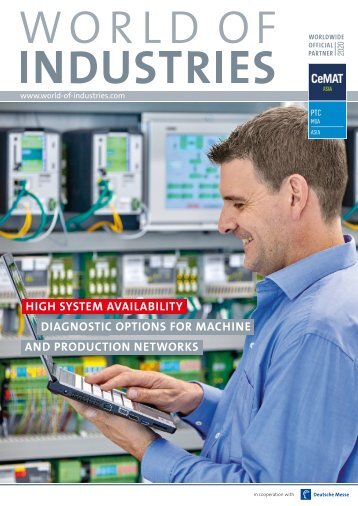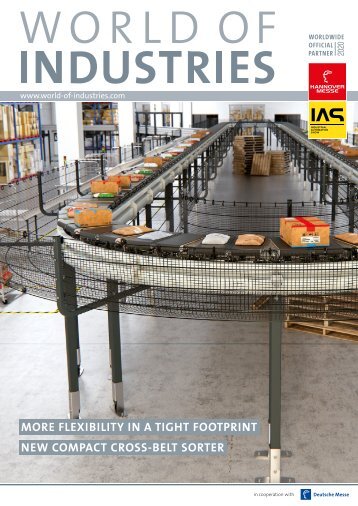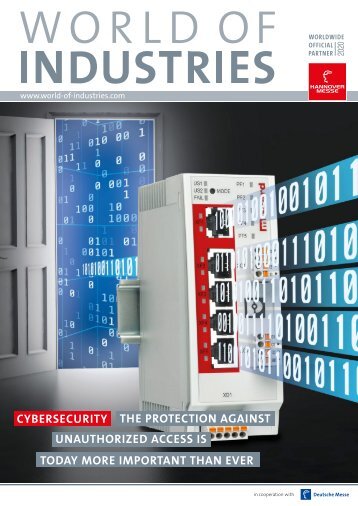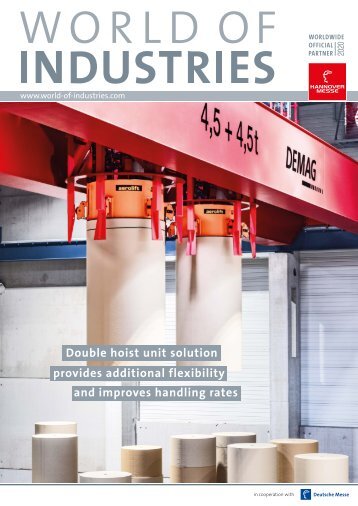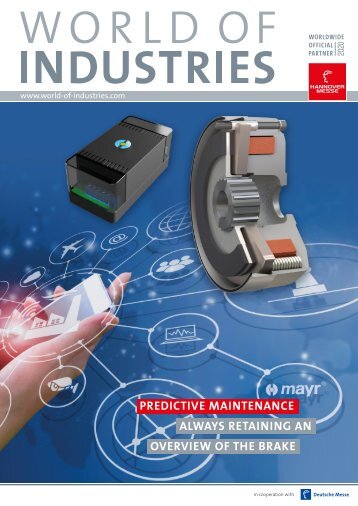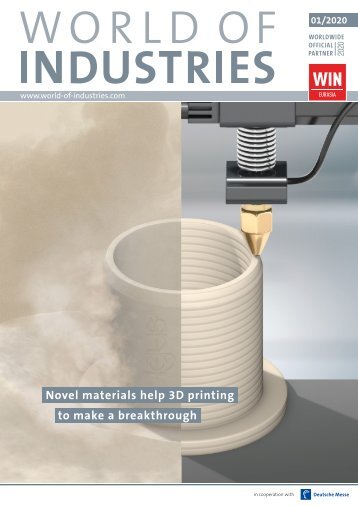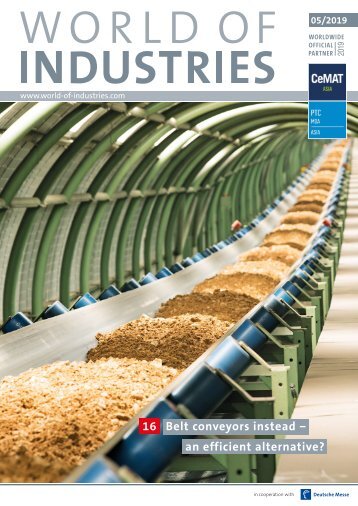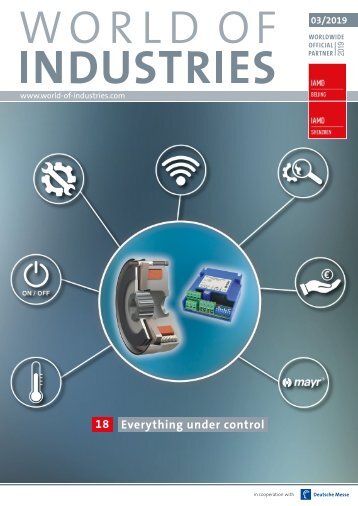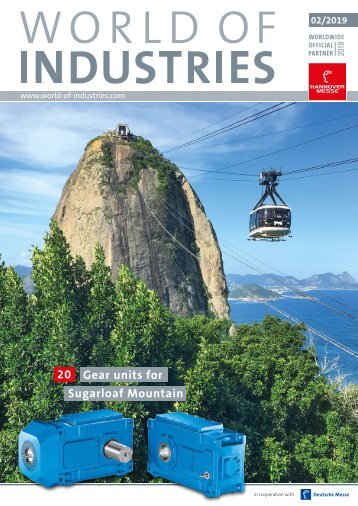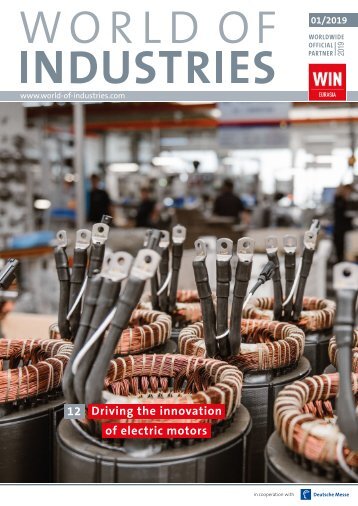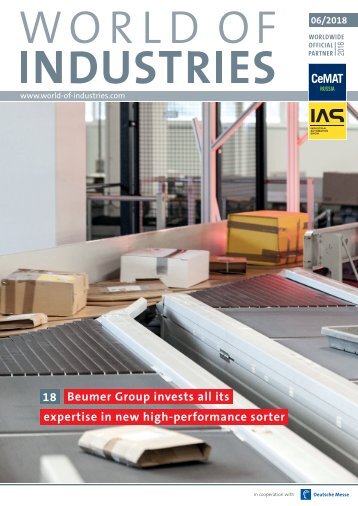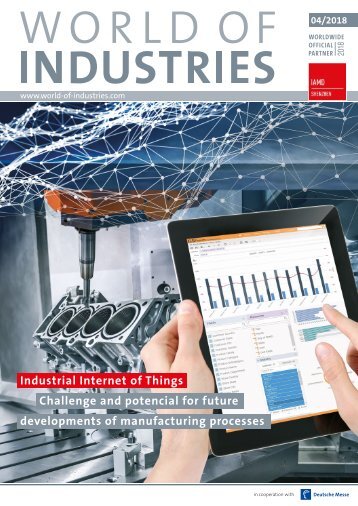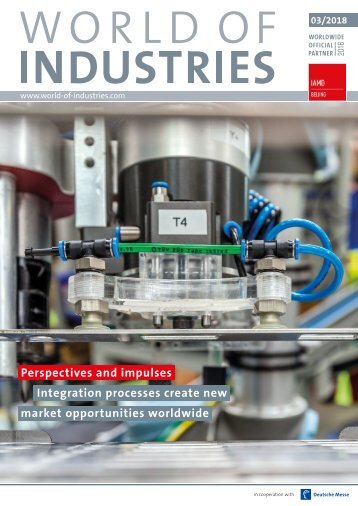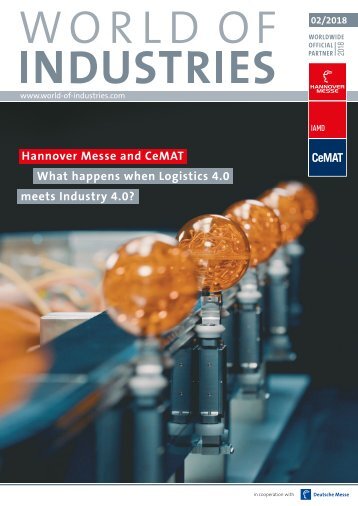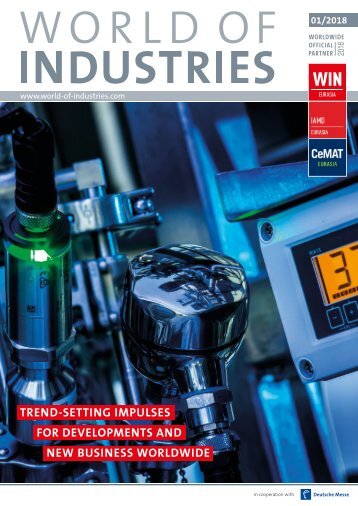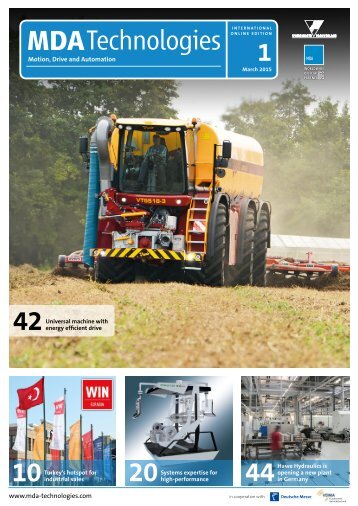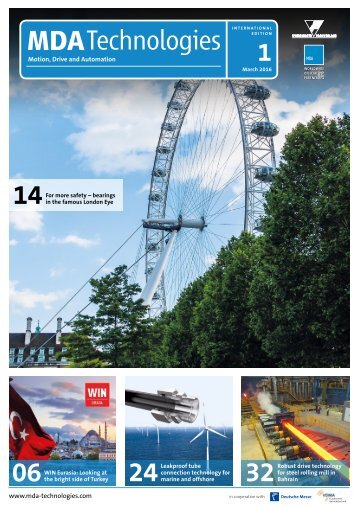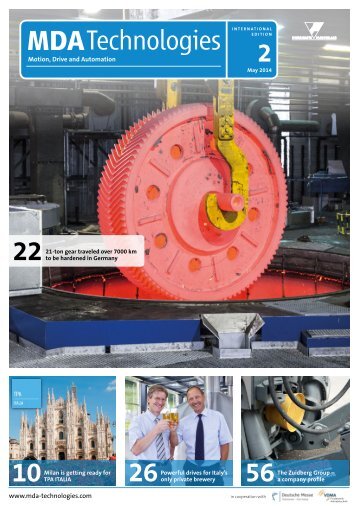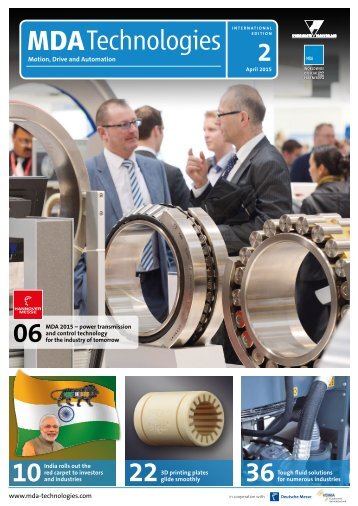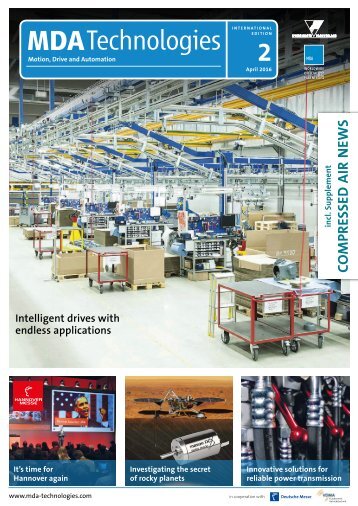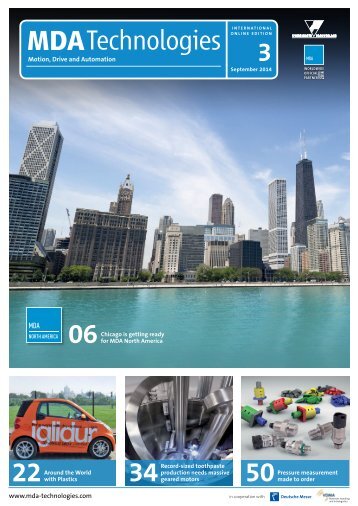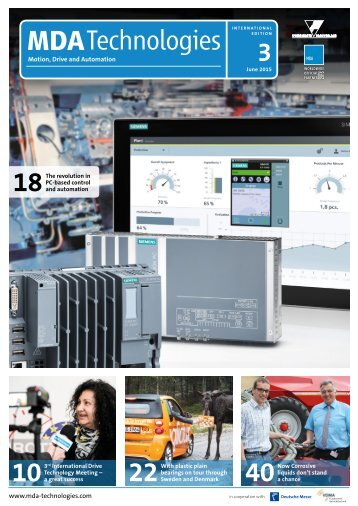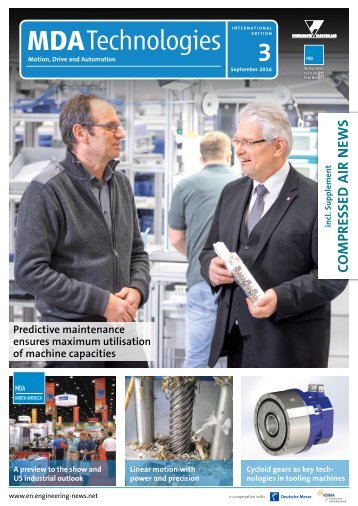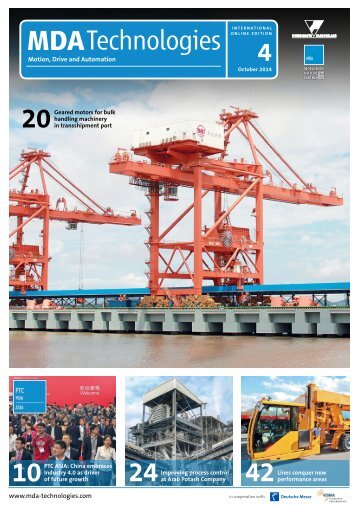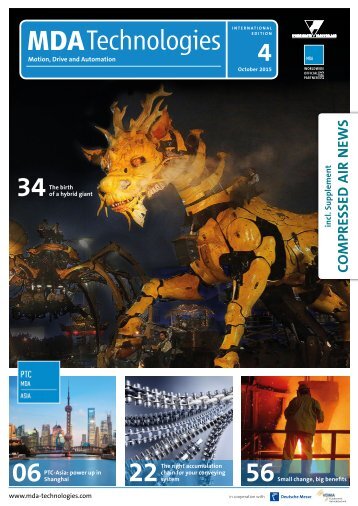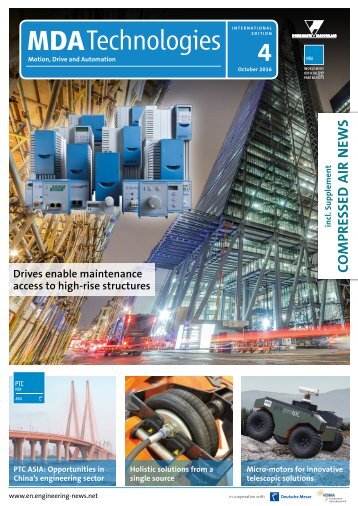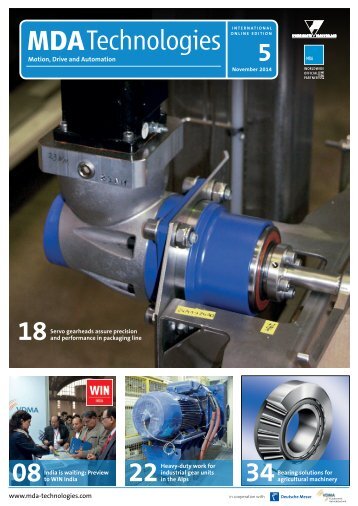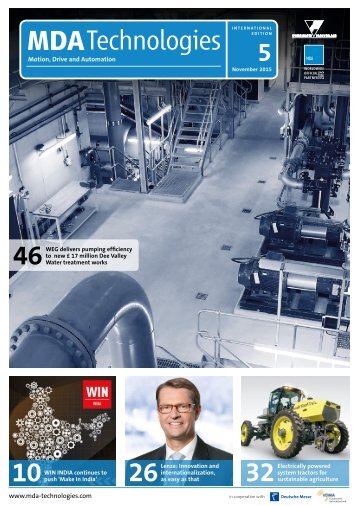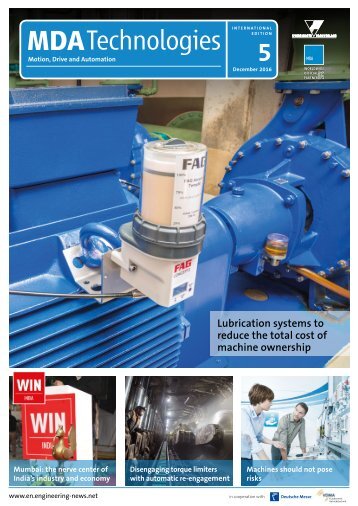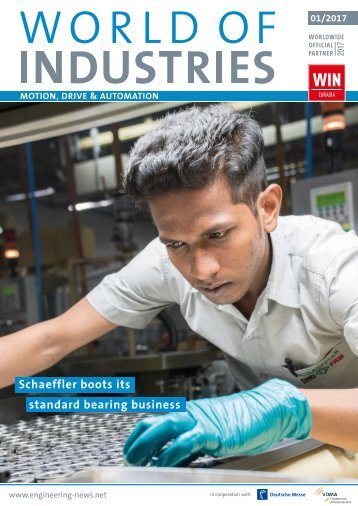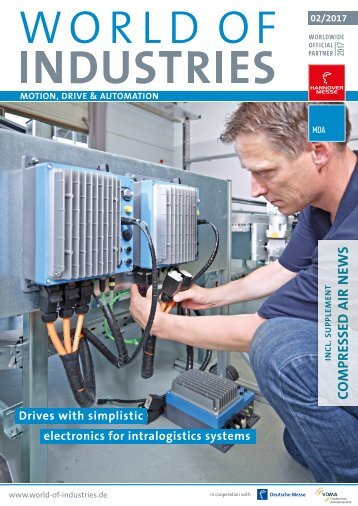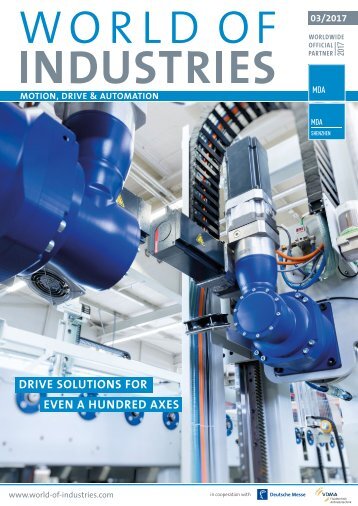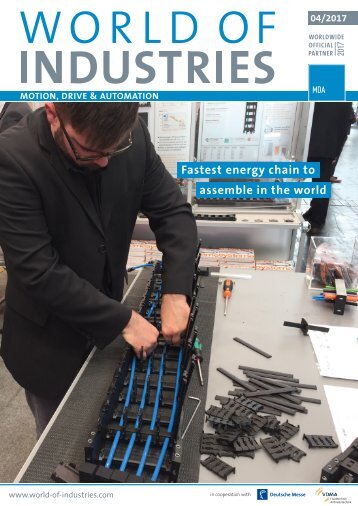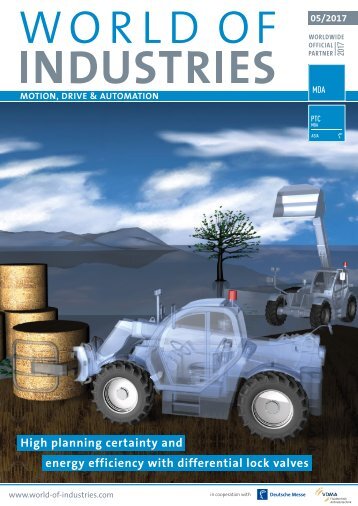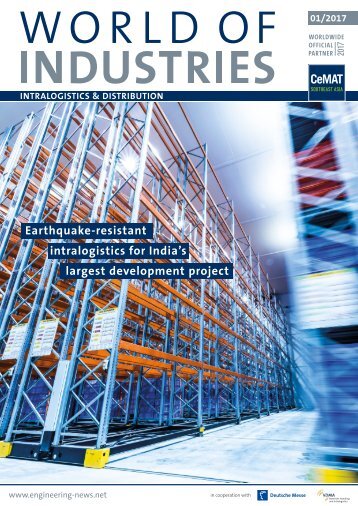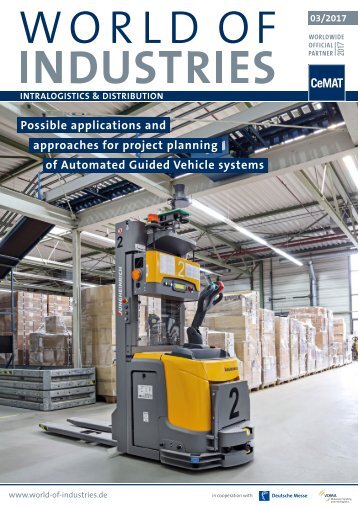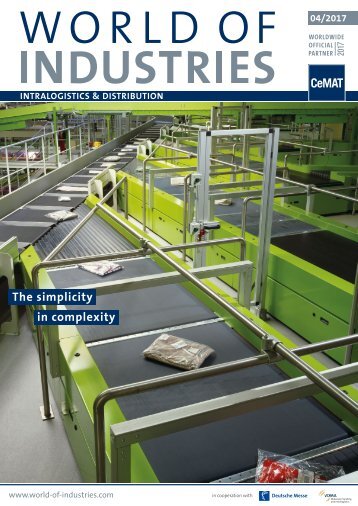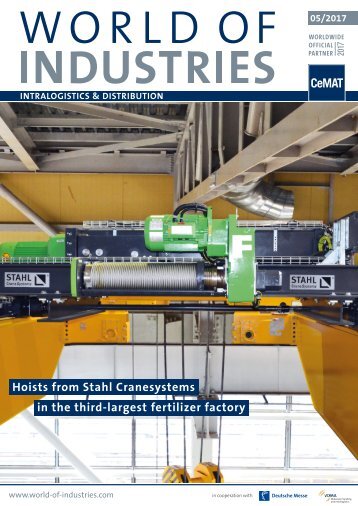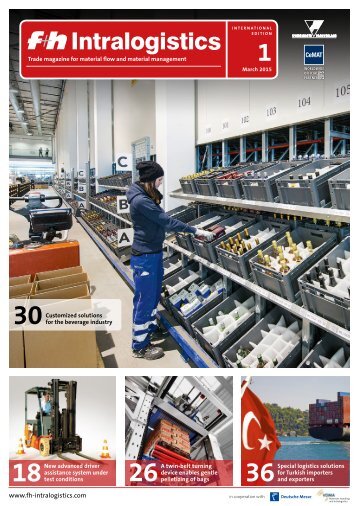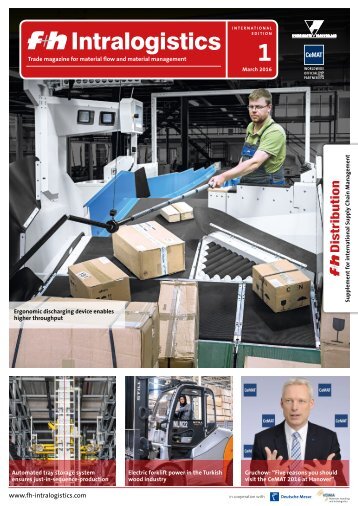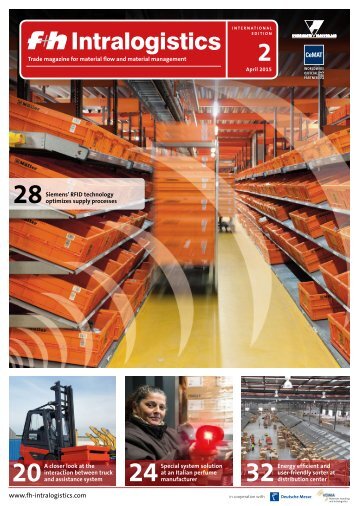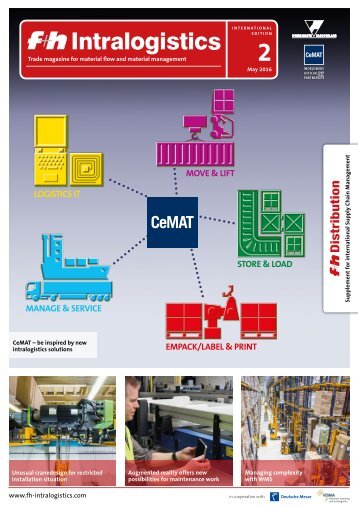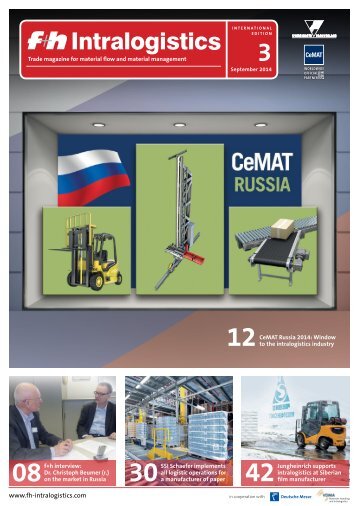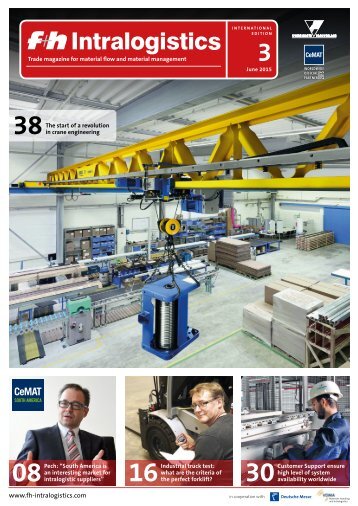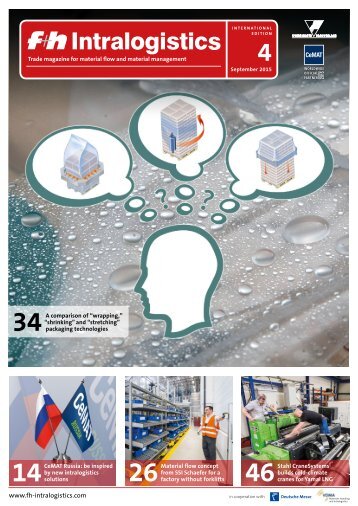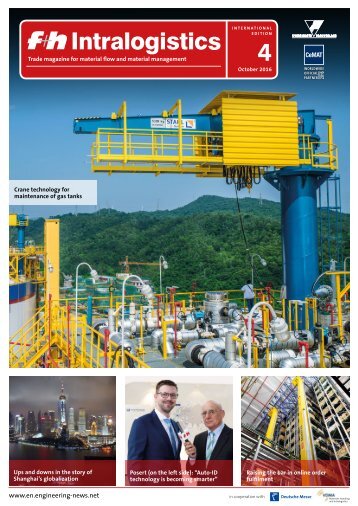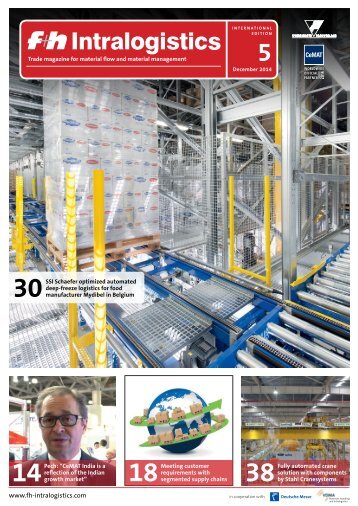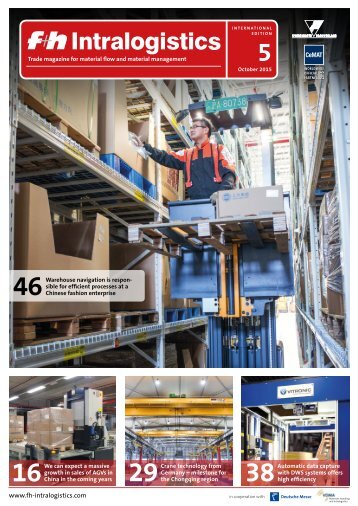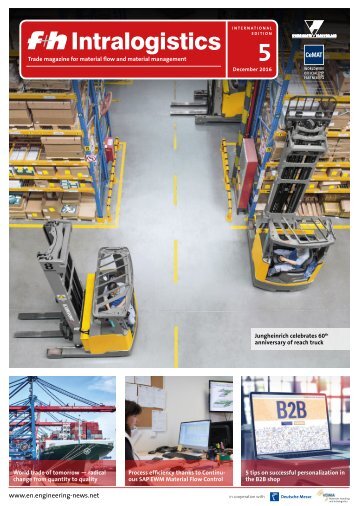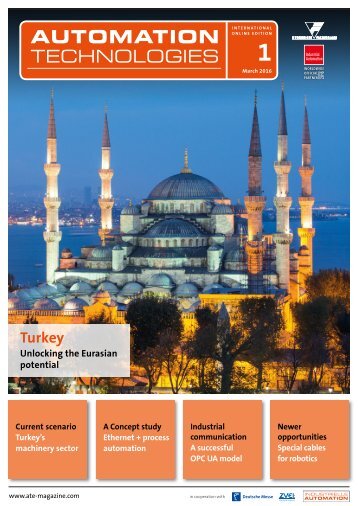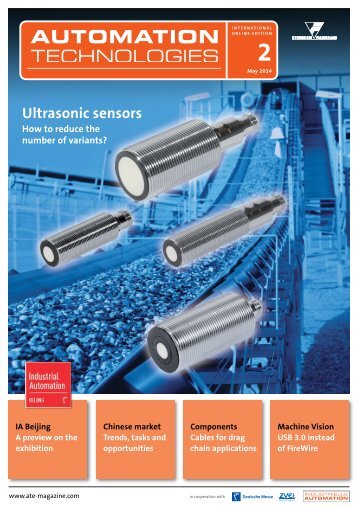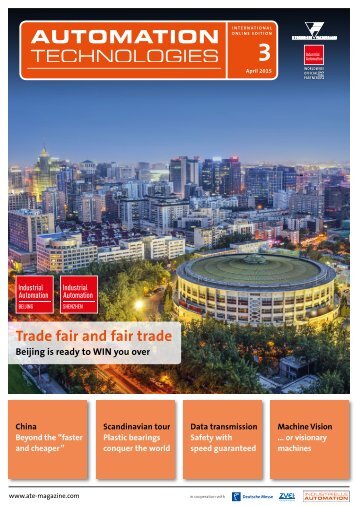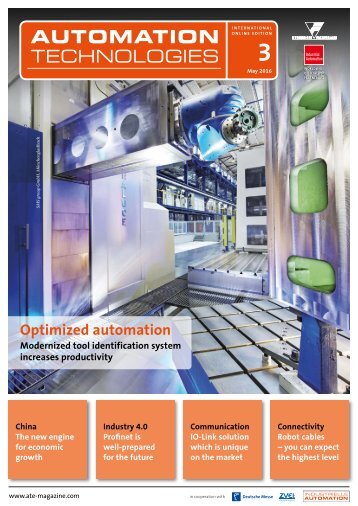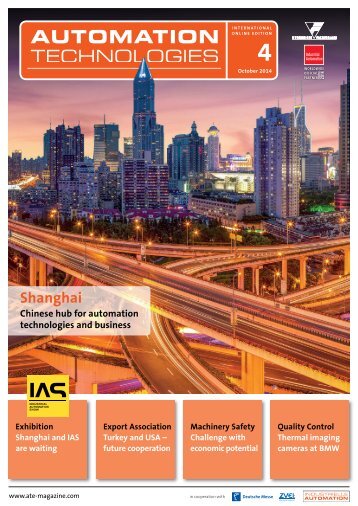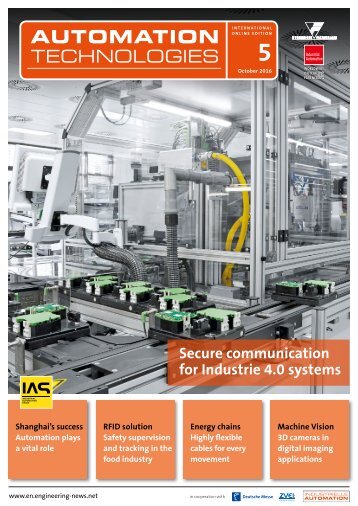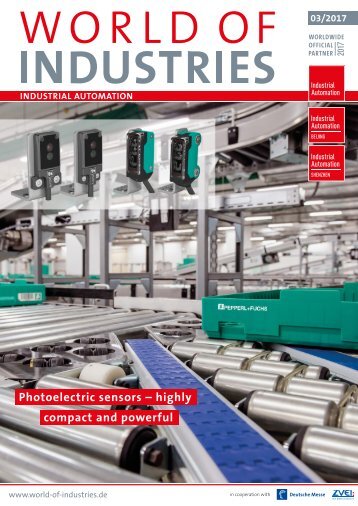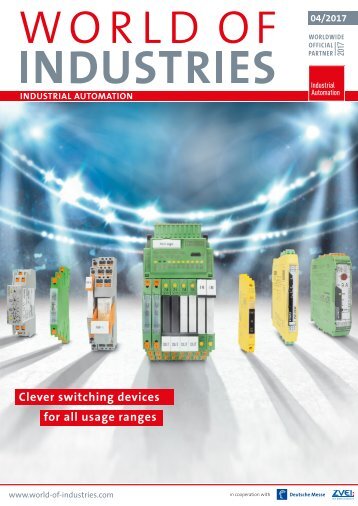Automation Technologies 5/2014
- Text
- Automation
- Technologies
Sensors and Measurement
Sensors and Measurement Quality control and traceability in the dust Ex Zone – with RFID Achim Weber Micro gas generators in seat belt pretensioners and head restraints ensure that vehicle safety systems respond immediately in the event of an emergency. For this the capsules are filled with a precisely defined quantity of powder in a fully automated assembly system. The system builder uses an RFID system that is approved for the dust Ex zone. “Atex zones are not routine environments for machine builders,” says Andreas Gradl, project manager at IMA Automation in Amberg, Bavaria. The company manufactures assembly and production systems for different sectors. However, none of these sectors typically operates in the explosion hazardous area. IMA was therefore breaking new ground when it developed a system for producing micro gas generator capsules in dust Ex zone 22. Micro gas generators are small explosive capsules that are fitted in active seat belt pretensioners or head restraints in vehicles. In the event of collision, Author: Achim Weber is sales specialist at Turck Germany Company name: Hans Turck GmbH & Co. KG Headquarters: Mülheim an der Ruhr, Germany Turnover: € 450 m (2013) Employees: more than 3,350 Products: sensors, fieldbuses, interfaces, RFID About AUTOMATION TECHNOLOGIES 5/2014
Sensors and Measurement next page the active belt pretensioner initiates a pre-tightening of the safety belt. An active head restraint is primarily used for a rear collision which causes the heads of passengers to be thrown forward rapidly. Through the automatic safety mechanism, the head restraint moves forward with the head and reduces the distance between the head and the head restraint. This therefore prevents the so-called “whiplash effect”. Fault-free production The manufacturer of the capsules turned to IMA Automation Amberg GmbH to build an automated assembly system for micro gas generator capsules. Part of the explosion protection concept involved the location of the hazardous processes in a separate Atex zone. The empty capsules are inserted in the workpiece holder and weighed in the safe area. The loaded workpiece holders are transported via a conveyor system into the hazardous area where they are filled at various metering stations. Besides its requirements regarding explosion protection, the customer also wanted the ability to fill the capsules with milligram precision and to integrate quality control and quality assurance in the plant. Any faulty capsules have to be detected as early as possible in the manufacturing process and rejected immediately. With a limited window for quality control of the explosive capsules an absolutely fault-free production process had to be ensured. To ensure this quality control, the manufacturer specified in its initial order that each individual capsule must be identified during the manufacturing process. Production in detail The empty aluminum capsules are firstly weighed in the safe area since the weight of these thimble-sized receptacles varies only by milligrams. The controller stores the weight in a database to determine after each filling exactly how many milligrams of powder are added. 150 workpiece holders transport the capsules in the closed circuit system. They are identified using Turck’s BL ident RFID system. An RFID tag is embedded in each workpiece holder for this purpose. In the first process step, the machine weighs the capsules and writes the tare weight to the database. The read/write head links the database entry with the 01 The RFID heads read out the tag on the workpiece holder
- Page 1:
international ONLINE Edition 5 Nove
- Page 4 and 5:
COLOMBIA SLOVAKIA table of content
- Page 6 and 7:
News and Markets Enabling Indian ma
- Page 8 and 9:
News and Markets IST AG: 20 years i
- Page 10 and 11:
News and Markets European Imaging A
- Page 12 and 13:
News news and markets big our pictu
- Page 14 and 15:
AUTOMATION TECHNOLOGIES Ten-point-p
- Page 16 and 17:
AUTOMATION TECHNOLOGIES India is wa
- Page 18 and 19:
News and Markets What do you expect
- Page 20 and 21: News and markets India goes Hanover
- Page 22 and 23: news and markets UNTAPPED POTENTIAL
- Page 24 and 25: AUTOMATION TECHNOLOGIES Find the so
- Page 26 and 27: AUTOMATION TECHNOLOGIES Quality con
- Page 28 and 29: AUTOMATION TECHNOLOGIES Quo vadis p
- Page 30 and 31: AUTOMATION TECHNOLOGIES Waste recyc
- Page 32 and 33: AUTOMATION TECHNOLOGIES Sensors for
- Page 34 and 35: AUTOMATION TECHNOLOGIES Shortened e
- Page 36 and 37: AUTOMATION TECHNOLOGIES Robot world
- Page 38 and 39: AUTOMATION TECHNOLOGIES I/O system
- Page 40 and 41: AUTOMATION TECHNOLOGIES Remote I/O
- Page 42 and 43: AUTOMATION TECHNOLOGIES Profinet is
- Page 44 and 45: AUTOMATION TECHNOLOGIES Quality che
- Page 46: Components and Software Separable c
- Page 49 and 50: ead article AUTOMATION TECHNOLOGIES
- Page 51 and 52: AUTOMATION TECHNOLOGIES video benef
- Page 53 and 54: video Syndy at work read article
- Page 55 and 56: AUTOMATION TECHNOLOGIES read articl
- Page 57 and 58: News and markets Compact and cost-e
- Page 59 and 60: Editorial Using international coope
- Page 61 and 62: news and markets this does not refe
- Page 63 and 64: WIN India: “A preview of Hannover
- Page 65 and 66: sensors and Measurement It can be h
- Page 67 and 68: sensors and Measurement next page 0
- Page 69: sensors and Measurement Make inform
- Page 73 and 74: Reach international markets. New bu
- Page 75 and 76: Sensors and Measurement next page P
- Page 77 and 78: Sensors and Measurement Electronic
- Page 79 and 80: Sensors and Measurement 02 The ligh
- Page 81 and 82: Sensors and Measurement with an int
- Page 83 and 84: Control and drive technology next p
- Page 85 and 86: Control and drive technology Interv
- Page 87 and 88: Company name: Maxon Motor Establish
- Page 89 and 90: mined that the bag room facility sh
- Page 91 and 92: industrial communication next page
- Page 93 and 94: Get engineering news. Inspiration i
- Page 95 and 96: Industrial Communication next page
- Page 97 and 98: Get engineering news. Inspiration i
- Page 99 and 100: Industrial Communication Bürkert a
- Page 101 and 102: Components and software Company nam
- Page 103 and 104: Components and Software next page n
- Page 105 and 106: Components and Software high therma
- Page 107 and 108: Machine Vision On the wiring head a
- Page 109 and 110: Machine Vision next page with irreg
- Page 111: Reach international markets. New bu
Inappropriate
Loading...
Mail this publication
Loading...
Embed
Loading...

